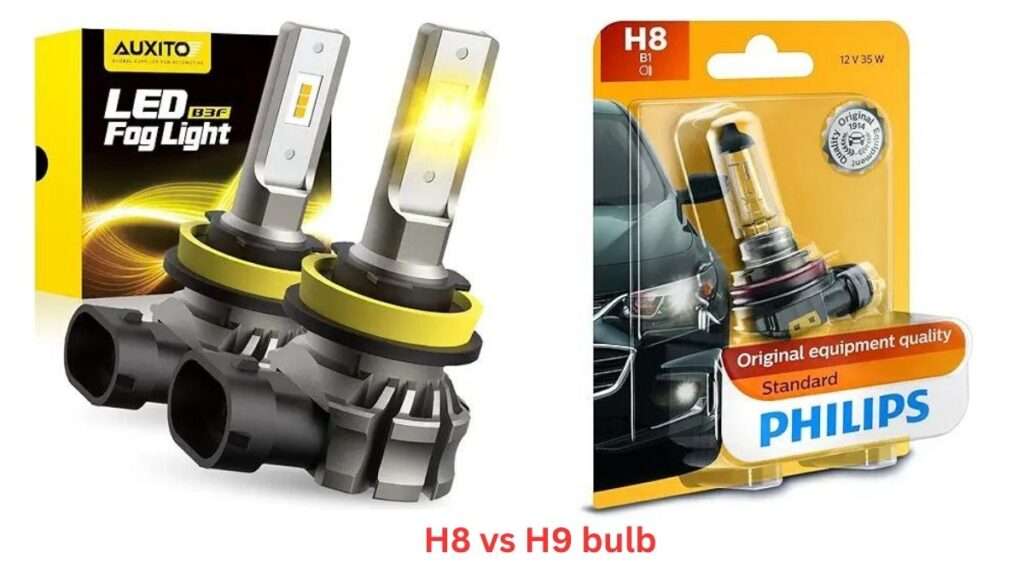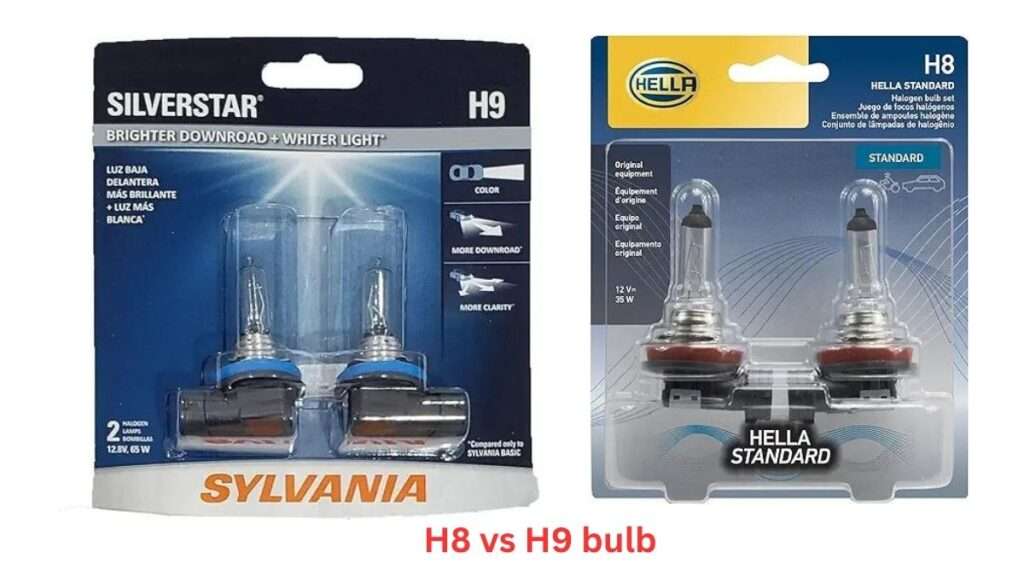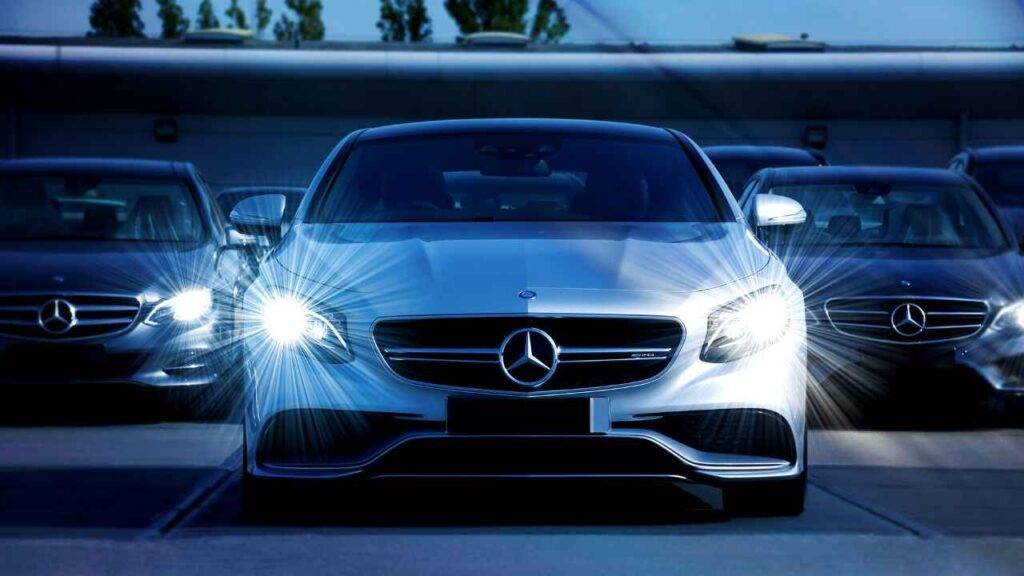Your driving experience can be greatly enhanced by upgrading your car’s headlights, especially at night or in inclement weather. The H8 vs H9 bulbs are popular choices for headlight upgrades, but how do you decide which one is the best fit for your vehicle? In this detailed guide, we’ll walk you through the key aspects of H8 and H9 bulbs, including their differences, pros and cons, and performance. By the end of this article, you’ll have a clear idea of which bulb suits your needs, so you can make an informed decision and drive safely.
What Are H8 and H9 Bulbs?
Definition and Basic Characteristics of H8 Bulbs
H8 bulbs are halogen bulbs commonly used in automotive lighting. Known for their versatility, H8 bulbs typically have a wattage of 35W and produce a moderate amount of light, making them suitable for both fog lights and low-beam headlights. H8 bulbs have a lower lumen output compared to H9 bulbs, but they consume less power, making them more energy-efficient in some cases.
Definition and Basic Characteristics of H9 Bulbs
H9 bulbs, on the other hand, are a step up in terms of brightness and power. They operate at 65W and offer a much higher lumens output, making them ideal for high-beam headlights. H9 bulbs provide more intense light, which helps in long-distance visibility, particularly useful for highway driving and rural roads where brighter lights are necessary.
Common Applications in Vehicles
Both H8 and H9 bulbs are primarily used in headlights, with H8 being more common in fog lights and H9 preferred for high beams due to its stronger light output. These bulbs are widely compatible with many vehicle models, especially those from OEM manufacturers.
Brief History and Evolution of These Bulb Types
Both H8 and H9 bulbs belong to the halogen bulb family, which has been a staple in automotive lighting for decades. Halogen bulbs gained popularity because of their durability and cost-effectiveness. Over time, advancements in filament design and heat management have made these bulbs more efficient, though they now compete with LED and xenon bulbs.
Key Differences Between H8 and H9 Bulbs
1. Wattage Comparison
The first major difference is the wattage. H8 bulbs operate at 35W, while H9 bulbs require 65W. This difference in power consumption means that H9 bulbs provide more brightness, but they also generate more heat, which could affect the lifespan of the bulb.
2. Lumens Output and Brightness Levels
The lumens output directly correlates with brightness. H9 bulbs produce around 2,100 lumens, making them significantly brighter than H8 bulbs, which output about 1,400 lumens. This difference is crucial for drivers looking for better visibility during night driving or in low-visibility conditions like fog and rain.
3. Color Temperature and Light Quality
When it comes to color temperature, H8 and H9 bulbs offer similar options, typically ranging from 3,200K to 3,400K. However, some aftermarket models provide a cooler, white light at around 5,000K. Light quality and color temperature affect night driving visibility and driver comfort, reducing eye strain over long drives.
4. Beam Pattern and Focus
Beam pattern and focus are critical for ensuring that your headlights don’t cause unnecessary glare for oncoming traffic. Both H8 and H9 bulbs deliver a focused beam, but H9 bulbs tend to have a wider light throw distance, making them better suited for high-beam use on highways.
5. Lifespan Expectations
Due to their lower wattage, H8 bulbs generally last longer than H9 bulbs. H9 bulbs burn hotter and brighter, which can reduce their lifespan. On average, an H8 bulb may last up to 1,500 hours, while an H9 bulb might only last around 1,000 hours.
Pros and Cons of H8 Bulbs
i). Advantages of Using H8 Bulbs
- Energy Efficiency: H8 bulbs consume less power, reducing the load on your vehicle’s electrical system.
- Longer Lifespan: They typically last longer than H9 bulbs, making them cost-effective in the long run.
- Versatility: Suitable for both fog lights and low-beam headlights.
ii). Disadvantages or Limitations of H8 Bulbs
- Lower Brightness: With a lumen output of about 1,400, H8 bulbs may not provide enough brightness for drivers who frequently travel on poorly lit roads.
- Limited Applications: H8 bulbs may not be ideal for high-beam use due to their lower light output.
iii). Ideal Use Cases for H8 Bulbs
H8 bulbs are best suited for drivers who do a lot of city driving or urban driving, where streetlights and other vehicles provide additional illumination. They also work well as fog lights, especially in cars that have separate housings for low-beam and high-beam headlights.
Pros and Cons of H9 Bulbs
i). Advantages of Using H9 Bulbs
- Brighter Light: H9 bulbs offer superior brightness, making them ideal for high-beam and rural road illumination.
- Better for Night Driving: The higher lumen output significantly improves visibility during night driving and in challenging weather conditions like fog or rain.
ii). Disadvantages or Limitations of H9 Bulbs
- Shorter Lifespan: H9 bulbs tend to burn out faster due to their higher wattage and heat generation.
- Increased Power Consumption: They draw more power, which may put additional strain on older vehicles’ electrical systems.
iii). Ideal Use Cases for H9 Bulbs
H9 bulbs are perfect for rural driving, highway driving, and areas where street lighting is minimal. Their bright output makes them ideal for high-beam headlights, especially in long-distance driving.
Vehicle Compatibility and Installation
1. Which Vehicles Typically Use H8 or H9 Bulbs?
Both H8 and H9 bulbs are compatible with a wide range of vehicles, but the choice depends on the vehicle manufacturer’s recommendations. You’ll typically find H8 bulbs in vehicles that prioritize energy efficiency, while H9 bulbs are more common in vehicles designed for enhanced night visibility.
2. Interchangeability Between H8 and H9 Bulbs
While both bulbs may fit the same headlight housings, they are not entirely interchangeable due to their different wattages and lumens output. Installing an H9 bulb in place of an H8 bulb could cause overheating or burn out the headlight housing if the electrical system isn’t designed for the higher wattage.
Step-by-Step Installation Guide
1. Turn off the vehicle and pop the hood.
2. Locate the headlight housing where your bulb will be installed.
3. Twist and remove the existing bulb from its socket.
4. Insert the new H8 or H9 bulb into the socket.
5. Secure it by twisting it back into place.
6. Test the headlights to ensure they’re working correctly.
Common Installation Mistakes to Avoid
- Touching the bulb’s glass surface, which can reduce its lifespan due to oil from your fingers.
- Forcing the bulb into the socket, which may damage the headlight housing or bulb.

Performance in Different Driving Conditions
i). Effectiveness in Fog, Rain, and Snow
H8 bulbs, with their lower brightness, perform well as fog lights. H9 bulbs, on the other hand, offer better visibility in heavy rain and snow due to their higher lumen output.
ii). Night Driving Performance Comparison
For night driving, H9 bulbs outperform H8 bulbs in terms of brightness and distance visibility. H8 bulbs are still adequate for city driving, but H9 bulbs are the go-to for drivers who need more light on dark highways.
iii). Impact on Driver Fatigue and Eye Strain
H8 bulbs tend to produce softer light, which is gentler on the eyes. H9 bulbs, while brighter, can cause more eye strain over extended periods if not properly aligned.
Cost Comparison and Value for Money
i). Average Prices for H8 and H9 Bulbs
H8 bulbs typically cost between $10 and $20, while H9 bulbs range from $15 to $30. The price difference is due to the higher wattage and brightness of H9 bulbs.
ii). Long-term Cost Considerations
While H9 bulbs may require more frequent replacements due to their shorter lifespan, their superior brightness makes them a better value for drivers who prioritize visibility.
iii). Best Brands and Models for Each Bulb Type
Some of the top brands for both H8 and H9 bulbs include Philips, Osram, and Sylvania. These brands are known for offering reliable, high-performance bulbs that meet DOT regulations.
Legal Considerations and Regulations
i). DOT and ECE Regulations for H8 and H9 Bulbs
Both H8 and H9 bulbs must comply with DOT (Department of Transportation) and ECE (Economic Commission for Europe) standards to be legally used on public roads.
ii). Potential Legal Issues with Bulb Modifications
Altering your vehicle’s headlights beyond manufacturer recommendations, such as using a higher wattage bulb than specified, could result in fines or failed vehicle inspections.
iii). State-Specific Laws and Regulations to Be Aware Of
Each state may have different regulations regarding headlight brightness and modifications. Be sure to check local laws before upgrading your bulbs.
Conclusion
Choosing between H8 and H9 bulbs comes down to your specific driving needs. If you’re looking for energy efficiency and longer bulb life, H8 bulbs may be the way to go. However, if you need maximum brightness and enhanced visibility for night driving, H9 bulbs are the superior choice. Always consider your vehicle’s specifications, driving conditions, and local regulations when making your decision.
Related articles:
Hi, I’m Malik Suhail—an SEO expert, web designer, and passionate blogger with 2 years of experience. I specialize in crafting content that is not only informative but also tailored to meet the needs of my readers.
I write about diverse topics, always striving to simplify complex ideas and provide valuable insights that resonate with my audience. Whether it’s about SEO strategies, web design trends, or blogging tips, I am committed to delivering well-researched, practical, and easy-to-understand information.
My mission is to help readers navigate the digital world with confidence and clarity. I believe in adding value through authentic content that inspires action and delivers results.


